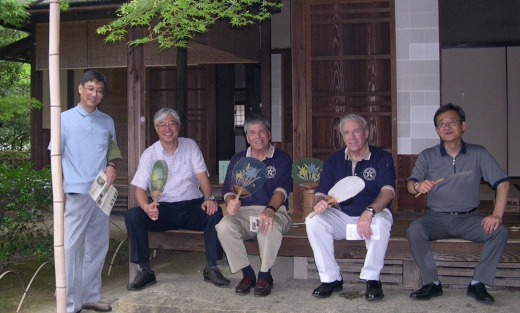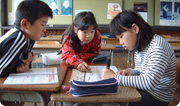Official Johnson Report
Dr. David Johnson and Dr. Roger Johnson were in Nagoya from September 10 to 13. They visited Inuyama-kita Elementary School on the 11th, gave two workshops on the 12th, and left for Tokyo the next day.
Inuyama City Education Board is promoting Cooperative Learning as an everyday teaching and learning practice. This board is also famous as the only municipal organization which did not conduct the national standardized examinations on 6th and 9th graders earlier this year. The first class the professors observed was a special education class, where a volunteer art teacher taught sumie-like painting (brush strokes are used with black and white sumi ink). All the students drew a picture of a tulip. Volunteers from the local community offered support for each student. The volunteers themselves took part in drawing. The second class was a math class for 4th graders. It was a review class of how to add up decimal numbers. The students were very active and took initiative in their own learning AND in learning together. After those formal observations, the teachers saw the 1st graders practicing tamaire for their upcoming athletic meet. A red team and a white team competed, and the two professors seemed to be impressed with the event. The school lunch with local fish and fried rice was also special.
The next day, the two professors offered two workshops at Chukyo University, first in the afternoon, and later in the evening, at Nanzan University. Chukyo had 45 participants, and Nanzan 110. Both workshops were given by both of them together. The one at Chukyo, full of practical applications, was titled “Active Learning: Cooperative Learning in the College Classroom.” The second one at Nanzan was more research-focused with a title “Social Interdependence: From Theory to Classroom Practice.” The participants of both workshops experienced working in groups. In order to encourage the need to work together, the Johnson professors repeatedly embellished their lectures with such proverbs as “All for one, and one for all” and “Sink or swim together.” Perhaps these can be translated as 『三人寄れば文殊の知恵』and 『一蓮托生』in Japanese.




